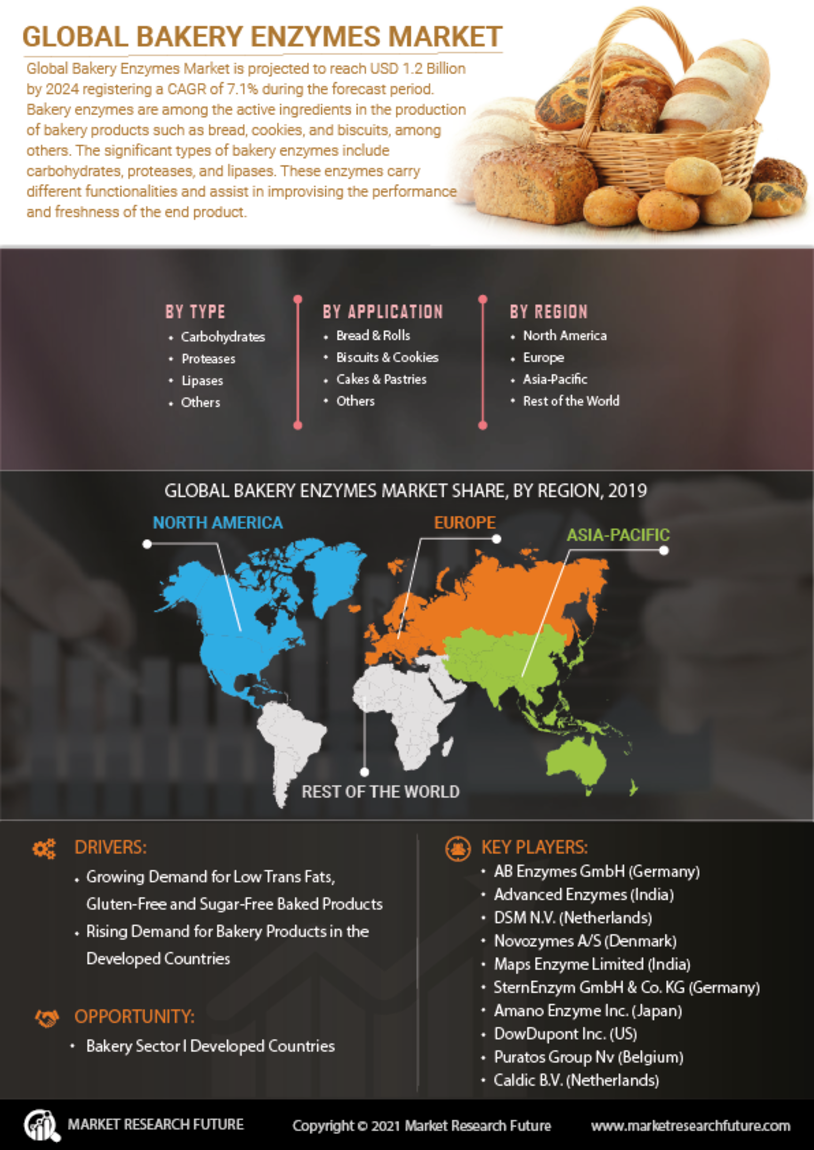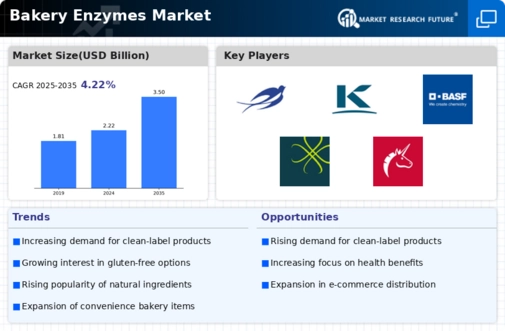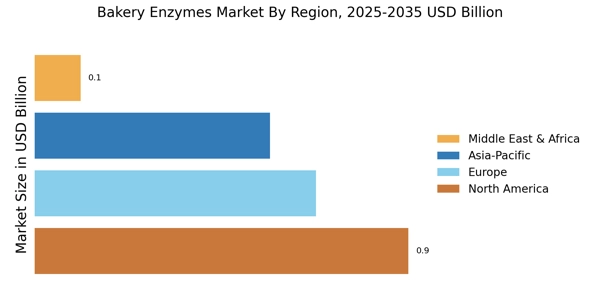Innovation in Baking Technologies
Technological advancements in baking processes are significantly influencing the Bakery Enzymes Market. Innovations such as automated baking systems and precision fermentation techniques are enhancing the efficiency and consistency of baked goods. Enzymes play a crucial role in these modern baking technologies by improving dough handling, fermentation, and overall product quality. For instance, the introduction of new enzyme formulations has been shown to reduce mixing times and improve dough stability, which is essential for large-scale production. Market data suggests that the adoption of innovative baking technologies is expected to increase by approximately 5% annually, creating a favorable environment for enzyme manufacturers to develop specialized products that cater to evolving industry needs.
Rising Demand for Clean Label Products
The Bakery Enzymes Market is experiencing a notable shift towards clean label products, driven by consumer preferences for transparency and natural ingredients. As consumers become increasingly health-conscious, they seek products that are free from artificial additives and preservatives. This trend is reflected in the growing demand for enzymes that enhance the quality and shelf life of baked goods without compromising on ingredient integrity. According to recent data, the clean label market is projected to grow at a compound annual growth rate of over 7% in the coming years, indicating a robust opportunity for bakery enzymes that align with these consumer expectations. Manufacturers are thus investing in enzyme technologies that not only improve product performance but also meet the clean label criteria, thereby propelling the Bakery Enzymes Market forward.
Growing Popularity of Gluten-Free Products
The Bakery Enzymes Market is witnessing a surge in the popularity of gluten-free products, driven by an increasing number of consumers adopting gluten-free diets for health reasons. This trend has prompted manufacturers to explore enzyme solutions that can enhance the texture and taste of gluten-free baked goods, which often face challenges in achieving the desired quality. Enzymes such as amylases and proteases are being utilized to improve dough elasticity and moisture retention in gluten-free formulations. Market analysis indicates that the gluten-free bakery segment is projected to grow at a rate of 8% annually, highlighting the potential for enzyme applications that cater specifically to this niche. As consumer demand for gluten-free options continues to rise, the Bakery Enzymes Market is likely to expand in response.
Expansion of Artisan and Specialty Bakeries
The Bakery Enzymes Market is benefiting from the expansion of artisan and specialty bakeries, which are gaining popularity among consumers seeking unique and high-quality baked products. These establishments often prioritize traditional baking methods while incorporating modern enzyme technologies to enhance their offerings. Enzymes can help artisan bakers achieve desired flavors, textures, and shelf life without compromising on the artisanal nature of their products. Market trends suggest that the artisan bakery segment is growing at a rate of 6% annually, indicating a robust opportunity for enzyme suppliers to cater to this niche. As more consumers gravitate towards specialty baked goods, the Bakery Enzymes Market is poised for growth, driven by the need for innovative enzyme solutions that meet the demands of artisan bakers.
Increased Focus on Product Quality and Consistency
In the competitive landscape of the Bakery Enzymes Market, there is an increasing emphasis on product quality and consistency. Consumers expect baked goods to have uniform texture, flavor, and appearance, which places pressure on manufacturers to maintain high standards. Enzymes are essential in achieving these quality benchmarks, as they facilitate better fermentation, improve dough handling, and enhance the overall sensory attributes of baked products. Recent studies indicate that the use of specific enzyme blends can lead to a 15% improvement in product consistency, making them invaluable in large-scale production settings. As the demand for high-quality baked goods continues to grow, the Bakery Enzymes Market is likely to see sustained investment in enzyme technologies that support these quality objectives.


















Leave a Comment